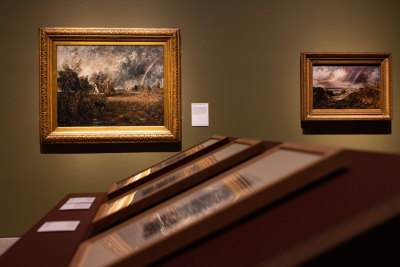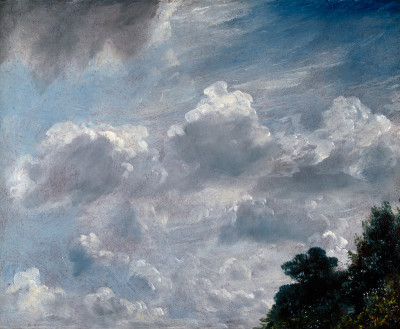How to read it: Anthony Green’s The Fur Coat: ‘Hazana’
How to read it: Anthony Green’s The Fur Coat: ‘Hazana’
By Morgan Feely
Published 28 February 2017
Here’s the story behind a slightly unusual work by Royal Academician Anthony Green.
-
-

What are we looking at?
The Fur Coat: ‘Hazana’ is a three-metre tall painting telling the story of the second marriage of the artist’s mother, Madeleine Dupont – seen through Green’s eyes as her teenage only child. The picture shows the house where Madeleine and Stanley Joscelyne lived after they were married. They named it Hazana, meaning “achievement” in Spanish, which Madeleine was learning at the time. Green made most of the painting during the decade following Madeleine’s death in 2005, but salvaged her head from a painting made in 1963, which he later destroyed. All the work in the current exhibition – three-dimensional works, drawings, watercolours, documents and photographs – relate to The Fur Coat: ‘Hazana’.
What’s going on in the picture?
In the lower part of the painting, the figure of Madeleine projects slightly, making the work three-dimensional; her scarf, handbag and fur coat (a gift from Stanley, and considered the height of luxury in post-war Britain) are real objects, not painted. The upper part of the painting is a bedroom scene – in which Stanley does a headstand in his underwear while Madeleine reclines naked on the bed. By juxtaposing this funny, private scene against his depiction of Madeleine’s public persona, the artist creates a strange and uncomfortable image.
Why the unusual shape?
The irregular shape of The Fur Coat: ‘Hazana’ is typical of Anthony Green’s work. If the images in his mind are not contained within rectangles, he asks, why should the pictures he paints be? Over time, the shapes of his paintings have become increasingly complex. More recently he’s also painted on freestanding structures (examples can be seen in the exhibition).
-
-
Why did Green want to document this relationship?
Madeleine divorced Green’s father, Frederick, in 1954. At that time a greater stigma surrounded divorce than it does today. Later the same year, she married Stan. It was a happy and fulfilling relationship. Green says The Fur Coat: ‘Hazana’ is a tribute to his mother’s bravery, and also to the stepfather he liked and respected. He recalls, “I came to admire ‘Stan’. He was completely ordinary. He took my mother on cruises, they created a new home in Friern Barnet, gardened and enjoyed bedtime – both of them had missed sex for too many years.” He addresses a teenage boy’s curiosity about his mother’s sex life with disarming frankness, using a humorous note to tackle a difficult theme. Stanley’s headstand may strike a surreal note, but in fact it derives from an episode Anthony remembers from his childhood.
-
Making light conversation, Mum told me that Stanley could stand on his head – whereupon he did, quickly and elegantly, accompanied by squeals from my mother, 'Stop, Stan, you’ll give yourself an attack!' Back on his feet, he smoothed his pin-striped suit, not a pomaded hair out of place.
Anthony Green RA
-
Tell me more about the artist
The work of Anthony Green (b. 1939) will be familiar to many RA visitors, as he has shown in the Summer Exhibition every year since 1966. 2017 is the 40th anniversary of his election as a Royal Academician in 1977. In its acutely personal subject-matter, this painting is characteristic of his art, which is almost always concerned with his family life. It often focuses on his relationship with his wife, Mary Cozens-Walker. The pair met as students at the Slade School of Fine Art, and before long he had decided that the subject of his work should be “Mary, love, passion, sex”. Ultimately he sees himself as a narrative artist; his stories are all drawn from his own life.
Anthony Green: Painting Life, a fully illustrated book on Green’s art, edited by Martin Bailey, is on sale now.




